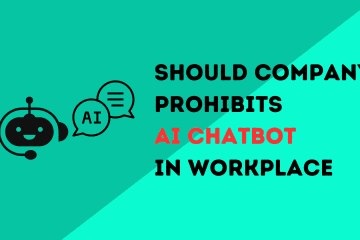COVID-19 pandemic is forcing many businesses to shift towards work from home. Employees began to use their personal computers or corporate given laptops to carry on their tasks as part of the business continuity plan.
But many organizations do not realize that their data may not be control, backing up, and centralized into a secure and safe environment. When it comes to remote working, accessing files in the most convenient ways is the top priority. However, employees often make unconscious mistakes; for instance, copy and edit files somewhere in the desktop, or shared folders, then leave it abandoned. Who owned these data? The company and the customers.
Corporate data has become the backbone of company success and one of the most critical assets. Imagine, what if all these data are lost one day? Your customer payment record, their delivery orders, subscription records, contract, and agreements, all gone.
The risks of data loss are everywhere and anytime, and no one could predict when it happens. Here’s the highest risk:
Security Breaches – Hackers, Malware and Viruses
We all know that Ransomware remains one of the top outbreaks that can cause unrecoverable damages to any network and system. Imagine the only machine storing critical data is infected by Ransomware, and no other backup data is available. Even if you willing to pay for the price, it doesn’t mean your information is recoverable. Advanced malware protection software may help at some level, but there will be no silver bullet that can give a 100% assurance. Risk is always there.
User Negligence
No offense, but the truth is always bitter—over 32% of data losses caused by human error. Often, mistakes such as accidental deletion, lost somewhere in the computer, no backup, keeping everything in the fragile USB drive without a second copy is simply too risky.
Physical Damages
Disk failure, hardware damage, and natural disasters like floods, fire, and hardware that keep your data malfunctioned are inevitable, and we should not take for granted because it usually strikes without any warning.
Using the Wrong Medium
Backup and online file storage is not the same. Storing files in cloud storage like Box, Dropbox, and Onedrive is okay for general use. However, such service providers are not liable for any data loss for several valid reasons regardless of whose fault because data is always under the custodian of the users or company, and recovery may incur an additional charge too.
So how to choose the right backup?
There are hundreds of different types of backup solutions in the market, even copy-paste into another location manually as the second copy is better than none. Our advice, It doesn’t really matter as long the solution can backup and recover the critical data as when it needed without any problems or errors. However, getting a reliable yet affordable backup solution is somewhat subjective.
For optimal protection here’s what you need:
• Easy to set up and compatible with most of the conventional operating systems.
• A convenient centralized cloud platform that allows users to create, edit, and reschedules backup jobs anytime, anywhere.
• Supports from NAS to SAN and Cloud storage to empower users to choose the nearest backup for the quickest recovery. Automatically replicates your local on-premise backup to secure cloud storage that meets your business DR compliance.
• It comes with robust security features like multi-factor authentication, built-in malware protection, and data encryption.
• Not just data, but has the ability to backup other applications like O365, Virtual Machine, and Emails.
• Pay-as-you-Grow and subscription model that the company does not need to spend on expensive storage and technology upfront.
• The 3-2-1 backup rule – the strategy is the key that we should always remember by:Keeping at least 3 copies of data
Store 2 copies of the backup into different mediums or storage
– Keeping at least 3 copies of data
– Store 2 copies of the backup into different mediums or storage
– Keep 1 copy of backup offsite
Lastly, get a reliable solution provider that will always keep your platform up-to-date, highly responsive to any of your technical questions, and has both capabilities and capacity to cater to your data growth.
To know more https://www.qloud.my/backup-and-disaster-recovery/


